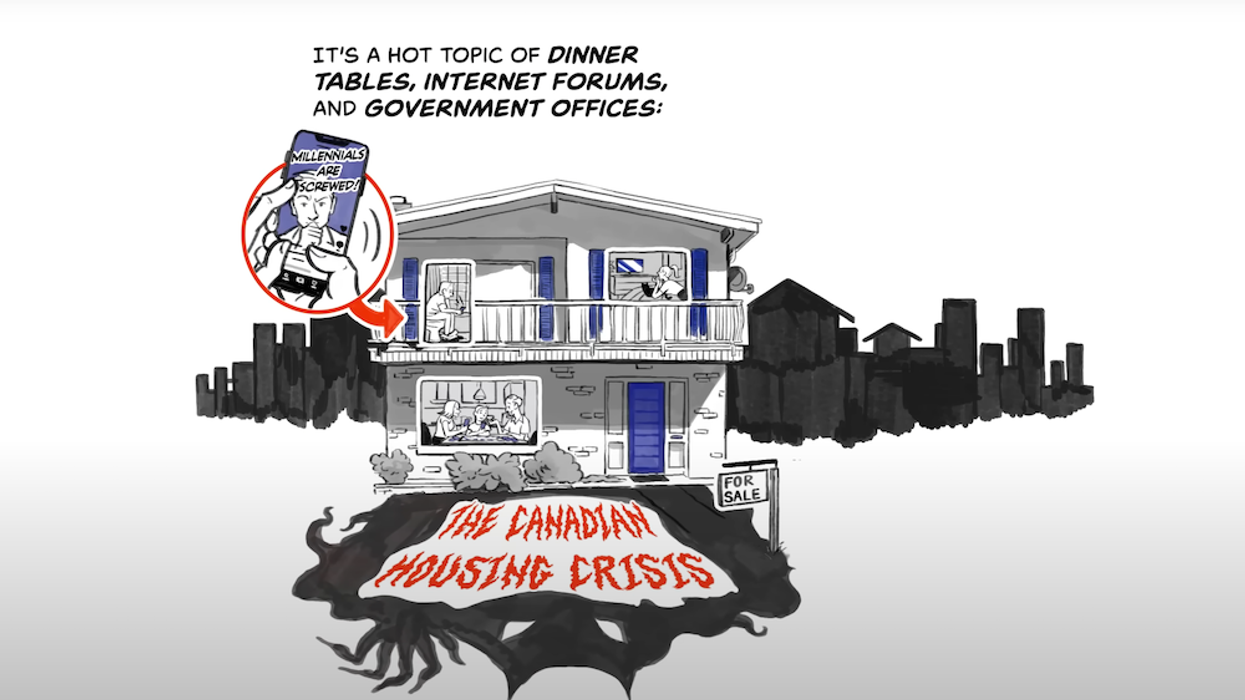If you’ve been following this column, you will know that I, like other industry insiders, have been talking about supply issues for years. We have all shared the hurdles the industry faces, and provided our opinions on how governments — at all levels — should approach the problem.
Opinions have ranged from frustrated vents to constructive recommendations, and appear to have all landed on deaf ears. Now, Canadians find ourselves in a housing environment that is even worse than before — and insiders are getting louder in attempts to finally be heard.
According to CMHC’s own data, 95% of housing stock is coming from the private sector. So, we must be pushing policy that motivates private sector investment, rather than discourages it. Capital gains taxes, lopsided landlord disincentives, and untenable risks heaped on developers, builders, owners, and investors — this is not the path to housing, and it needs to be rerouted, immediately.
At the core, it appears that we industry experts and insiders are being ignored, and decisions are being made by government officials who have little-to-no housing experience or understanding. The result is a deeply entrenched, complicated problem for us to dig out of, despite their best intentions. The starting point for this dig-out is to start listening to the experts who are openly disclosing what they need to proceed.
Today I’ll showcase prominent voices from two important industry initiatives. I hope government influencers might read this themselves, and I hope to encourage you — the reader — to take the steps you can to support housing. I encourage you to follow the calls to action provided and share this article with your friends, colleagues, and family to get the word out on the make-or-break items on the table.
On New-Home Taxes
Let’s start with an initiative coming from a group of developers in Ontario: The Coalition Against New-Home Taxes (CANT), who are attacking the tax portion of the cost equation, to make the numbers work.
CANT is primarily focused on government taxes, attacking the 30% of GTA new-home cost that is made up of taxes (which have increased by triple digits in the last 15 years). In a housing affordability crisis, it’s easy to see that adding costs by way of taxes is counterproductive.
It is well publicized that Ontario new-home project launches are down by as much as 70%, with tens of thousands of homes sitting on hold as developers sit in uncertainty on delivering, selling, and financing these projects in today’s market.
To learn more about the problems Ontario developers are facing, visit CANT’s website, and follow the calls to action to get involved.
Many Challenges To Tackle
From the west coast, leading developer Wesgroup recently published a video that explains (excellently) the many challenges the development community faces when trying to bring a project to market. Watch it here, or below:
It is incredible to visualize the costs and time loaded onto a development by governments, at all levels, by way of taxes and extractions. It’s clearly not sustainable, and despite well meaning intentions, it’s backfiring. Less housing is getting built as more “programs” are introduced.
In our May 2024 article, which reflected on the federal government's budget, we provided some tips for governments along these same lines.
READ: Expert Reflection: Hot Takes (And Hot Tips) On The 2024 Federal Budget
To help you in your dinner party and water cooler discussions, here’s a summary of the key items that need addressing, and fast.
For housing to get built, we need A) supply of housing to come to market, that is B) affordable for the demand to receive it.
Developers have been clear. To provide supply, they need:
- Lower construction costs. This can be achieved by lowering extraneous environmental, safety, and code requirements that have continued to accelerate. In addition, incentives in the labour market to get more trades working should be considered.
- Lower development roadblocks. This refers to red tape at all levels, extraneous and long approval processes, and the newest hurdle: changing targets and guidelines as governments stumble to respond to public pressures with vote-getting tactics.
- Lower development taxes. As stated earlier, the many municipalities increasing their development cost charges is providing further disincentive for developers to build, and needs to stop. GST and HST have been looked at, but more needs to be done. And, the increase to capital gains tax is certainly yet another unsupportive measure, if the goal is to incentivize housing investment.
- Cheaper financing. As we suggested in our March article, there is no question that the rapid rise in interest rates has had a massive impact on the ability for a developer to proceed with their projects. From the cost of debt on the project, to the cost of debt for would-be purchasers, rates need to fall — quickly and steeply.
Further, for sales and absorptions to occur, buyers need the following:
- Cheaper financing. As mentioned above, and with the price of homes remaining fairly stable and high, interest rates must come down (dramatically) to create the buying power — and the consumer confidence — necessary to make a purchase.
- Affordable product options. Despite a politician's dreams that “family-sized” condos and “livable one bedrooms” should be a certain size and quantity, complete with parking for the whole family, homes need to be built in the size and quantity that people can afford. This means municipalities need to back off telling people how to live, and stop their senseless requirements, so developers can build homes people will actually buy.
- Investment protections. CMHC data suggests 1 in 5 homes are owned by an investor providing much needed housing to renters. Currently, these investors are being taxed and over-burdened with renter protections that ultimately make their investments untenable. If we want the people who can afford to buy a second home to keep renting that second home out, we need to support them more and, and be fair in our treatment of landlords and tenants.
Again, with CMHC stating only 4% of housing is social, we must not be distracted by a small number of social housing announcements, and instead pressure governments to turn the tide on market housing of all kinds, if we have any chance of emerging from this Canadian crisis.
As I’ve stated in past articles, there are tens of thousands of homes, permit-ready and sitting on hold, because their proformas don’t work. This would be the logical place to start. If we can make these homes work, we bring much needed housing to market with the greatest immediacy.
It is about time that we, the citizens of Canada, demand real solutions that the experts who are building homes will support — and can actually use to move the needle. The vote-getting socialist agenda is not working to build the housing required, or to ensure the middle class can afford to own or rent the homes they live in.
It’s time to start listening to the experts who know — especially given we’re dependent on them to build the housing that’s needed.
This article is authored by Ben Smith, President of AVESDO: a Canadian software company harnessing the power of data to help real estate professionals make better, faster, and more informed sales decisions.
______________________________________________________________________________________________________________________________
This article was produced in partnership with STOREYS Custom Studio.





















